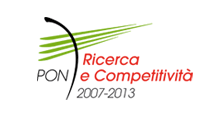Results to date: 22/05/2014
The project L.E.D.A. (Laboratory of Earthquake engineering and Dynamic Analysis) has the objective of creating an advanced research centre in the field of seismic engineering and vibration analysis and control.
The laboratory will be composed of two joint manufacturing bodies. The first will be an industrial warehouse, traversed by an overhead travelling crane of 50 t and will account for the main infrastructure: the vibratory tables, the oleodynamic motors, the strong floor and the strong wall. A second building with two floors, will account for the laboratories of Geotechnics and Dynamics of terrain and material testing, the workshops, a conference room, a library, a computer lab, and rooms for visiting students and visiting professors. Both buildings will be endowed with all systems, acting on the elimination of architectural barriers. The seismic mass will be held in the basement to guarantee the isolation of the vibratory tables and the system of pumps necessary for their functioning.
The distinctive characteristics of the project are tied to the infrastructure and equipment envisaged:
- The creation of a system of two vibratory tables, unique in Europe, inside which scale models or life-size models can be seismically qualified for civil, industrial or military use.
- The creation of a foundation plate and contrasting walls to carry out tests on structural components in the static or pseudo-dynamic field.
- The creation of LBCB (Loading and Boundary Condition Boxes), i.e. charged nodes capable of transmitting six actions, or rather six independent movements, to the structures subject to testing.
- The creation of a 6000 kN press and a universal 60 kN machine which can operate both by charge control and by movement control.
The Geotechnical laboratory will have a system for tri-axial testing by controlled stress path, machines for the dynamic characterisation of terrain through resonant column tests, systems for the mechanical characterisation of rocks, and an ultrasonic measurement system for P and S speed. The research centre will also be provided with a series of technological systems and a photovoltaic system whose maximum power is estimated to be equal to 162 kW.
After an initial phase which saw the completion of the preliminary planning, the execution of the main procedures of competition, the acquisition of building concessions, and the enhancement of structures and experimental dynamics laboratories of the University of Enna "Kore", on 16 October 2013 the works were delivered for the construction of the research centre, the reaction mass for the support of seismic simulators and the creation of the strong floor and strong wall.
With the delivery of the building works the project enters its central phase, fully respecting the foreseen time programme.
It is possible to visit the project internet site http://leda.unikorelab.it/en/ where the images of the webcams installed in the construction areas will be made available.






 Storify
Storify twitter
twitter YouTube
YouTube


